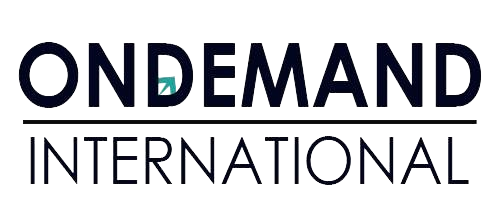Introduction

Calculating Operating Profit is vital for every business to keep themselves updated about their finances, profitability, and coming opportunities. It will determine the performance of a company as compared to its competitors.
Operating Profit formula
Interest expenditure, income, and other non-operational revenue streams are excluded from operating profit formula calculations.
How to Calculate Operating Profit?
To compute the operating profit formula, you may use one of three formulas:
Operating profit formula 1: Operating profit= Total Revenue – Direct Costs – Indirect Costs
OR
Operating profit formula 2: Operating profit= Gross Profit – Operating Expenses – Depreciation – Amortization
OR
Operating profit formula 3: Operating profit= Net Earnings + Interest Expense + Taxes
The Operating profit is a ratio of operating profit and net sales. The formula for how to calculate operating profit can be represented as follows:
Operating profit Ratio = Operating Profit / Net Sales × 100
Since the operating profit ratio is expressed as a percentage, therefore in how to Calculate Operating Profit, we need to multiply by 100 the value obtained by the division of operating profit with the net sales.
Sample Calculation
The D Trump footwear firm had a total of $50 million in sales in the second quarter of this year. The cost of raw materials and supplies utilized in the sold items was $18 million, labor expenses directly applied were $4 million, administrative and staff wages were $8 million, and depreciation and amortization were $2 million throughout that time. Consequently, the revenue before taxes generated by activities resulted in $18 million.
Direct costs with Example
Direct costs are incurred and related to creating, purchasing, or providing a product or service. The expenditures are directly tied to the cost of producing goods or services (depending on the level of production. Costs might be constant or variable, but they are proportional to the quantity produced and sold.
The following are some examples of direct costs:
- Parts, raw materials, and manufacturing supplies are examples of direct materials and supplies.
- The cost of goods includes the cost of the final product for resale plus shipping fees.
- Commissions or professional fees — The cost of providing services, particularly in service-oriented industries like insurance, real estate, consulting, and law companies.
- Machine operators, factory workers, assembly line operators, and painters are examples of direct labor hired to make a product directly.
- Consumption of electricity and water – Electric expenses and water usage are ascribed to the production.
Indirect Costs with Example
Indirect cost is an operating expense that is not directly related to the production or purchase of resale items. These expenses are usually rolled up into a fixed or overhead cost and distributed across multiple operational tasks.
The following are some examples of indirect costs:
- Production managers’ and quality assurance staff’s salaries and benefits
- Factory equipment maintenance and depreciation costs Rent of factory facility
- Utilities that are not directly engaged in the production or purchase of products
What is the difference between revenue and gross profit?
Gross profit is the result of the difference between the cost of products sold and sales returns/allowances from total sales income.
The monetary amount gained by selling products and services to business customers, minus merchandise returned and any allowances/discounts granted to clients, is known as sales revenue or net sales.
What Role Does Operating Income Play in a Business?
Operating income shows a company’s efficiency, which can also depict a company’s capacity to create additional earnings. Investors regularly monitor operating profit to gauge a company’s efficiency over time.
Just like Operating profit, gross profit and net profit are also important financial indicators for determining a company’s worth in the context of future possibilities. The more a company’s operational profit grows over time, the more successfully its main business is carried out.
Difference Between Operating Profit, Gross Profit, and Net Profit.
Here are two formulae of the operating profit formula that show the link between the two profitability measures:
Operating profit formula: 1- Operating Profit = (Gross Profit – Operating Expenses – Depreciation – Amortization
Operating profit formula: 2- Operating Profit = (Net Profit + Interest Expenses + Taxes)
A company’s operational profit might sometimes exceed its net profit (or even net loss). A corporation may prefer operational profit over net income, but a wise investor or competitor would consider both in context.
Operating Profit Advantages
It tells you how much money you make before you have to pay for things like interest and taxes, which are out of your control. Another important metric of a company’s profitability is its operating margin, calculated using operating profit.
- Operating profit tells how well a company is keeping its expenses under control. Year-over-year comparisons include pricing strategies, labor expenses, and raw material prices patterns.
- Operating profit provides an overview to the investors with a rapid picture of a company’s day-to-day management and decisions. Operating profit builds a trend line over time, revealing management’s adaptability and reaction to change and a possible trajectory for a company’s prospects.
- Operating profit gives a medium to let investors compare companies with their competitors.
Operating Profit Disadvantages
However, operating profit excludes costs that tell the whole story of a company’s financial health (e.g., interest and tax expenses). This is critical since these costs can severely diminish a company’s profitability. Consider two similar businesses: Pierre and Gino have the same operating earnings, but Pierre’s Bakery is in New York, and Gino’s Bakery is in Virginia (where taxes are lower). Gino’s bakery, on the other hand, Gino’s bakery is in a far better financial condition. Focusing on operational profit overlooks important elements when evaluating a company’s future health.
Conclusion
The operating profit formula has changed scenarios in matters of finances. A math formula that was ignored largely has been taken seriously in many ways. How can an organization keep up with its finances? This is exactly where the Operating profit formula becomes the ultimate solution.
